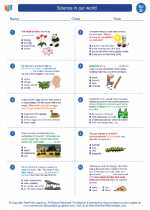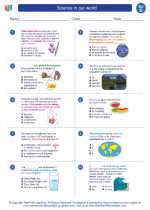Boyle's Law Equation
The mathematical equation for Boyle's Law is:
center;">\[ P \cdot V = k \]
Where:
Explanation of Boyle's Law
Boyle's Law states that, at constant temperature, the pressure of a given mass of gas is inversely proportional to its volume. In simpler terms, when the volume of a gas decreases, the pressure of the gas increases, and vice versa.
Study Guide for Boyle's Law
- Understanding the Equation: Make sure to understand the equation \( P \cdot V = k \) and how pressure and volume are related.
- Graphical Representation: Practice plotting pressure-volume graphs to visualize the inverse relationship described by Boyle's Law.
- Real-life Examples: Look for examples in everyday life where Boyle's Law is evident, such as inflating a balloon or using a syringe.
- Practical Experiments: Perform experiments to demonstrate Boyle's Law using different gases and varying pressure and volume conditions.
- Problem-Solving: Practice solving numerical problems related to Boyle's Law to reinforce understanding of the concept.
By mastering Boyle's Law, you will gain a deeper understanding of the behavior of gases and their properties. These principles are not only important in the field of science, but also have practical applications in various industries.
[Boyle's Law] Related Worksheets and Study Guides:
.◂Science Worksheets and Study Guides Fourth Grade. Science in our world
Study Guide Science in our world - 4th gr.
Science in our world - 4th gr.  Worksheet/Answer key
Worksheet/Answer key Science in our world - 4th gr.
Science in our world - 4th gr.  Worksheet/Answer key
Worksheet/Answer key Science in our world - 4th gr.
Science in our world - 4th gr.  Worksheet/Answer key
Worksheet/Answer key Science in our world - 4th gr.
Science in our world - 4th gr.  Vocabulary/Answer key
Vocabulary/Answer key Science in our world - 4th gr.
Science in our world - 4th gr. 

 Worksheet/Answer key
Worksheet/Answer key
 Worksheet/Answer key
Worksheet/Answer key
 Worksheet/Answer key
Worksheet/Answer key
 Vocabulary/Answer key
Vocabulary/Answer key

The resources above cover the following skills:
History and Nature of Science: A student should understand the history and nature of science. A student who meets the content standard should:
Develop an understanding that historical perspectives of scientific explanations demonstrate that scientific knowledge changes over time, building on prior knowledge.
Develop an understanding that scientific knowledge is ongoing and subject to change as new evidence becomes available through experimental and/or observational confirmation(s).